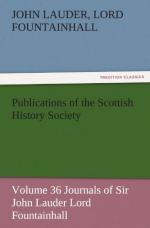[571] Sir John Lauder senior’s
third wife was a daughter of Ramsay of
Idington.
[572] The Coalston pear was
presented by the Warlock of Gifford to his
daughter,
who married Broun of Coalston, telling her that as
long
as
it was preserved fortune would not desert the family.
[573] Alms.
Saw the Maines, a roome lying betuixt Chirnesyde tour and Idington: ware Homes. On Patrick Mow, sone to the last Laird of Mow, maried the heritrix of it, and so hes the land. They tell whow the Earle of Roxbrugh was the cause of the ruine of the said Laird of Mow. Mow being on a tyme with some Englishmen took on a match for running upon a dog of my Lord Roxbrughs head[574] against their dogs, wheiron addressing himselfe to my Lord, he would not quite his dog unless Mow would give him a bond to pay him 8000 merks incaise he restored him not back the dog haill and sound: which Mow, thinking their ware no hazard in it, did. The day being come my Lords dog wins the race; but as soon as it was done my Lord had a man ther readie to shoot it: who accordingly did so, and fled. Then my Lord seiking the soume in the bond, and he unwilling to pay it, was at wast charges in defending, and at last succumbed, and so morgaged his estate to Adam Bell, who after got it. His ladie was a daughter of West Nisbets, with whom the young man Patrick was brought up.
[574] Upon the head of a dog
of Lord Roxburgh’s, i.e. backing
the
dog.




